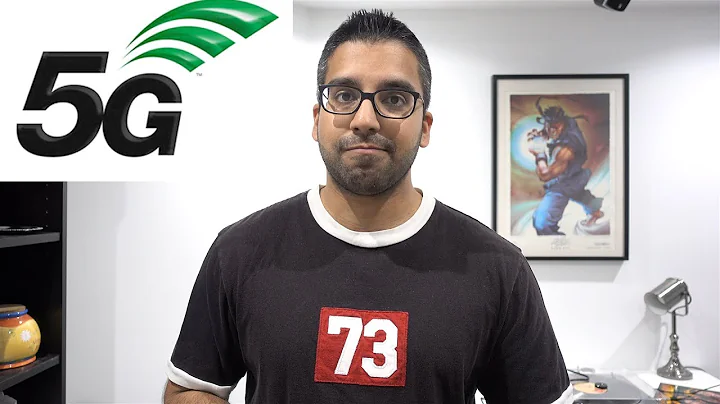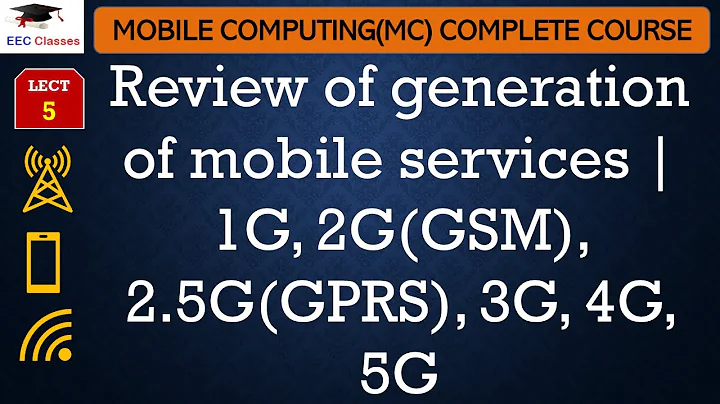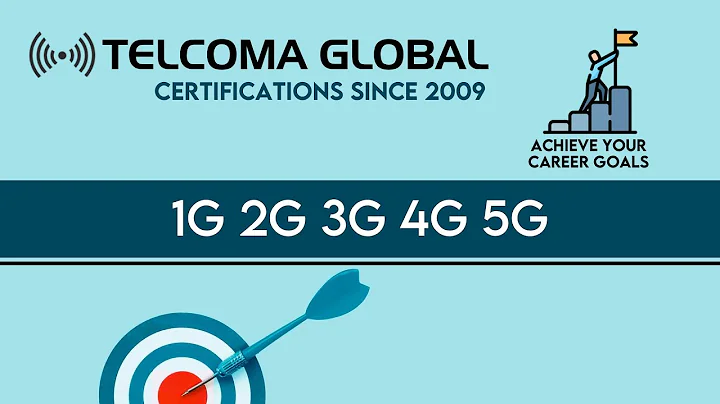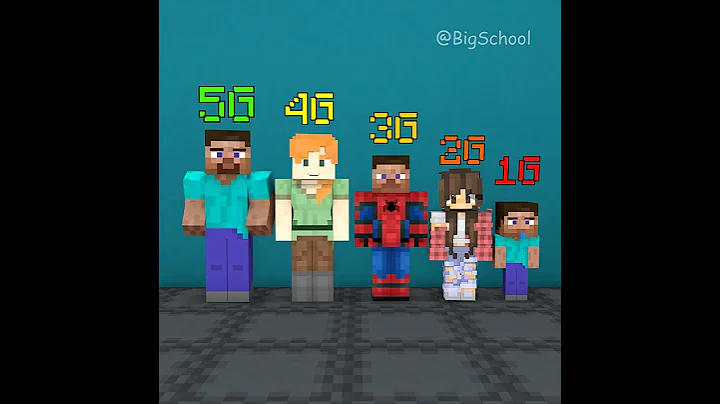mobile communication system has gradually developed from the first generation mobile communication system (1G), and has now developed to the fourth generation mobile communication system (4G). The fifth generation mobile communication system (5G) has also begun to be standardized, and it is expected to be commercialized in 2020 .
G refers to Generation, which means "generation". For example, 5G means the fifth generation.
1G means the first-generation mobile communication system. 2G, 3G, 4G, and 5G refer to the second, third, fourth, and fifth-generation mobile communication systems respectively, and this is indeed an artificial designation. The definitions of
1G~5G, etc., are mainly based on the specific implementation technologies from the perspective of rate, service type, transmission delay, and various handover success rates.


1G
The first-generation mobile communication system is analog cellular mobile communication. The mobility and cellular networking characteristics start from the first-generation mobile communication, but 1G is analog communication, which has poor anti-interference performance and simple use of FDMA technology. The frequency reuse and system capacity are not high. 1G is mainly two systems, namely AMPS from the Americas and TACS from Europe (China followed Europe using TACS at the time), which belonged to the era of Big Brother.
stands for : Motorola 8000X, commonly known as "Big Brother", supports basic functions such as voice and SMS;
Disadvantages : serial number, hacking
2G

, including more second-generation TDMA mobile communications and technologies. CDMA, while 2G is digital communication, the anti-interference ability is greatly enhanced. The second-generation mobile communication technology laid the foundation for the next 3G and 4G, such as the introduction of packet domains and the compatibility transformation of the air interface, making mobile phones no longer only have a single service such as voice and text messaging, but can also be more efficient Connect to the Internet (the circuit domain can also provide internet services, but the packet domain is relatively more suitable for internet services). There are also two main 2G standards, namely GSM (GPRS/EDGE) from the European ETSI organization and CDMA IS95/CDMA2000 1x from the TIA organization in the Americas with Qualcomm as the main force.
stands for : Nokia 7110, supports WAP, supports Internet access;
Disadvantages : low transmission rate, unstable network, high maintenance cost;
3G

In the previous two generations of mobile communication systems, no international organization has made clear The definition says what is 1G and what is 2G, but rely on the communication standardization organizations of various countries and regions to develop their own protocols. But when it came to 3G, ITU (International Telecommunication Union) proposed IMT-2000. Only those who meet the requirements of IMT-2000 can be accepted as 3G technology. For specific IMT-2000 requirements, you can refer to Baidu Google Wiki or related books. When the ITU solicited the IMT-2000 standard from the world, many national and regional communications standardization organizations proposed their own technologies. For example, ETSI in Europe and ARIB/TTC in Japan proposed WCDMA technologies with roughly the same key parameters and technologies. The 3GPP organization was established to standardize WCDMA. The so-called standardization is to form a unified agreement after technical PK and verbal battles to ensure compatibility of mutual interfaces. The TIA organization headed by Qualcomm in the United States also proposed CDMA-2000, and then the 3GPP2 organization was formed by a coalition of interests, which also standardized CDMA2000. China's CWTS (now CCSA) at that time also proposed TD-SCDMA, and then joined the 3GPP organization, integrated with UTRA TDD from ETSI, and completed standardization. Therefore, the mainstream 3G standards are mainly WCDMA, CDMA2000 EVDO, and TD-SCDMA. Later, Wimax organized by IEEE was approved to join the IMT-2000 family and became a 3G standard, which is the third of .Generation mobile communication technology. Compared with 2G,
3G mainly adopts CDMA technology (ignoring Wimax for the time being), which expands the spectrum, increases spectrum utilization, improves speed, and is more conducive to internet services. At the same time, the evolution of 3G technology uses multiple multiple access methods. The combination (FDD-HSPA and TD-SCDMA are the products of the combination of multiple multiple access technologies), higher-order modulation and coding technologies, and new technologies including multi-carrier bundling and MIMO are used to further increase the speed. Upgrade, some functions are also moved down from the upper-level machine such as RNC to the base station to complete, which improves the response speed and reduces the delay. At the same time, the 3GPP organization is constantly preparing for the future while evolving 3G technology, including softswitching in the circuit domain of the core network, IP in the packet domain and transmission network, and so on.
stands for : Apple, Lenovo, and Asus have launched tablet computers respectively;
Advantages : CDMA system has simple frequency planning, large system capacity, high frequency reuse coefficient, strong anti-multipath ability, good communication quality, soft capacity, soft Features such as switching show great development potential.
4G

The fourth-generation mobile communication technology is also required by the ITU, that is, the IMT-Advanced family. The specific requirements can be made by Baidu, Wiki, Google. The formulation of the 4G standard is mainly composed of two organizations. One is the 3GPP organization, which represents the vast majority of traditional operators, communication equipment manufacturers, etc., and LTE/LTE-Advanced comes from its hands. One is the IEEE organization, which is mainly a challenge from the IT industry to the communications industry. It launched the follow-up to Wimax, which is WierlessMAN-Advanced. In the 3G era, Qualcomm and the 3GPP2 organization headed by it have also abandoned their UMB technology in the 4G era and switched to LTE. LTE can be supported by Qualcomm and the 3GPP2 organization, which can be said to be a major blow to the competitor Wimax, but due to the addition of Qualcomm, the distribution of benefits of LTE is destined to be indispensable to Qualcomm. Whether it is good or bad, judges themselves.
Since LTE is the most widely used among 4G at present, it is the change of 4G relative to 3G for LTE. The first is a major change in the network architecture. LTE abandoned the base station-base station controller (2G)/radio resource manager (3G)-core network structure that has been used in 2G and 3G, and changed it to the base station directly connected to the core network. The entire network is flatter, reducing latency and improving user experience. The core network has abandoned the circuit domain, and the core network is moving towards all-IP, and the original services are carried by IMS. The key technology of the air interface has also abandoned 3G CDMA and changed to OFDM, which is more feasible and adaptable than CDMA in large bandwidth. The large-scale use of MIMO technology improves frequency reuse, and cross-carrier aggregation can achieve greater The spectrum bandwidth thus increases the speed. These technologies are all important factors for LTE-Advanced to enter the 4G standard (4G requires 1Gb/s downlink and 500Mb/s uplink in a static state). Due to the demand for large spectrum bandwidth and the scarcity of spectrum resources in various countries and regions, 4G will see more frequency bands being used. In contrast, 3G is mainly in frequency bands such as 800/850/900/1700/1900/2100. At present, LTE has become the mainstream of 4G with an absolute advantage. The Wimax family can be said to be completely suppressed. Therefore, 4G is also very hopeful to end the chaotic situation of multiple systems of the same generation over the years, and achieve a general unification by LTE.
stands for : Android, Apple iOS, Windows mobile devices are popular;
Disadvantages : coverage is limited, data transmission is delayed;
5G

The fifth-generation mobile communication technology has not yet been officially commercialized, but the 5G concept has been in full swing. The solicitation of 5G technical standards is expected to be determined by the end of 2017. From 2019 to 2020, we can see that global operators will successively launch 5G commercial service trials, including: Internet of Things, Internet of Vehicles,Key applications such as smart healthcare, VR/AR, and Industry 4.0 will drive the ecological chain of new industries.
The International Telecommunication Union IMT-2020 is also responsible for overseeing the formulation of 5G technical standards. It recently explained the advantages of 5G new technologies. The agency said that the upcoming general specification will support 1 million Internet devices per square kilometer, 1 millisecond delay and the amount of time for data packets to go from one point to another, higher energy and spectrum efficiency, and up to 20Gb/s downstream Peak data download speed. Taking autonomous vehicles as an example, the vehicles can exchange data at a speed of 0.001 seconds.
stands for : wait and see;
shortcomings : technological development is endless, and 5G must also have its shortcomings, which need to be explored;
briefly compares the specific differences of the 5th generation mobile communication:
network signal technology standard rate (bps) Typical frequency (MHz) coverage radius 1G analog voice FDMAAMPS, TACS2.4k800/90010-50 kilometers 2G digital voice TDMA, CDMAGSM, CDMA64k900/18005-10 kilometers 3G digital voice and data WCDMA, SCDMA
WCDMA, CDMA2000,
TD-SCDMA
2M
19402-1955-z19402 2145
2-5km 4G digital voice and video image OFDM, IMT-AdvancedTD-LTE, FDD-LTE, WiMax1G
2300-2320
1755-1765, 1850-1860
1-3 kilometers 5G digital voice HD video IMT-2020 7.5G3300-3600, 4800-5000100- 300 meters
With the development of mobile communication technology, the use of low frequency is close to saturation, and the carrier frequency of mobile communication is becoming higher and higher. This also means that the cell radius of the cellular system is getting smaller and smaller (because the higher the frequency, the The greater the attenuation).
Of course, the cell radius is not only determined by the carrier frequency, but also related to many other factors, such as natural environment, user density, and human interference. The standardization of
will be completed in two phases


5G standardization will be completed in two phases. The first phase of 3G independent standardization will be completed by the end of 2017. Non-Standalone standard freezes. In the second phase of
, 3GPP hopes to achieve the second milestone around the middle of 2018, which is to complete the standardization of the standalone model.
According to a report by the South China Morning Post in June 2017, Jefferies Securities analysts pointed out that China’s three major telecom companies (China Mobile, China Unicom, and China Telecom) estimated that they would invest US$180 billion in 5G infrastructure within 7 years. It is higher than their investment of US$117 billion in 4G networks from 2013 to 2020. Equipment manufacturers such as ZTE and Huawei Technologies will be the main beneficiaries.





















